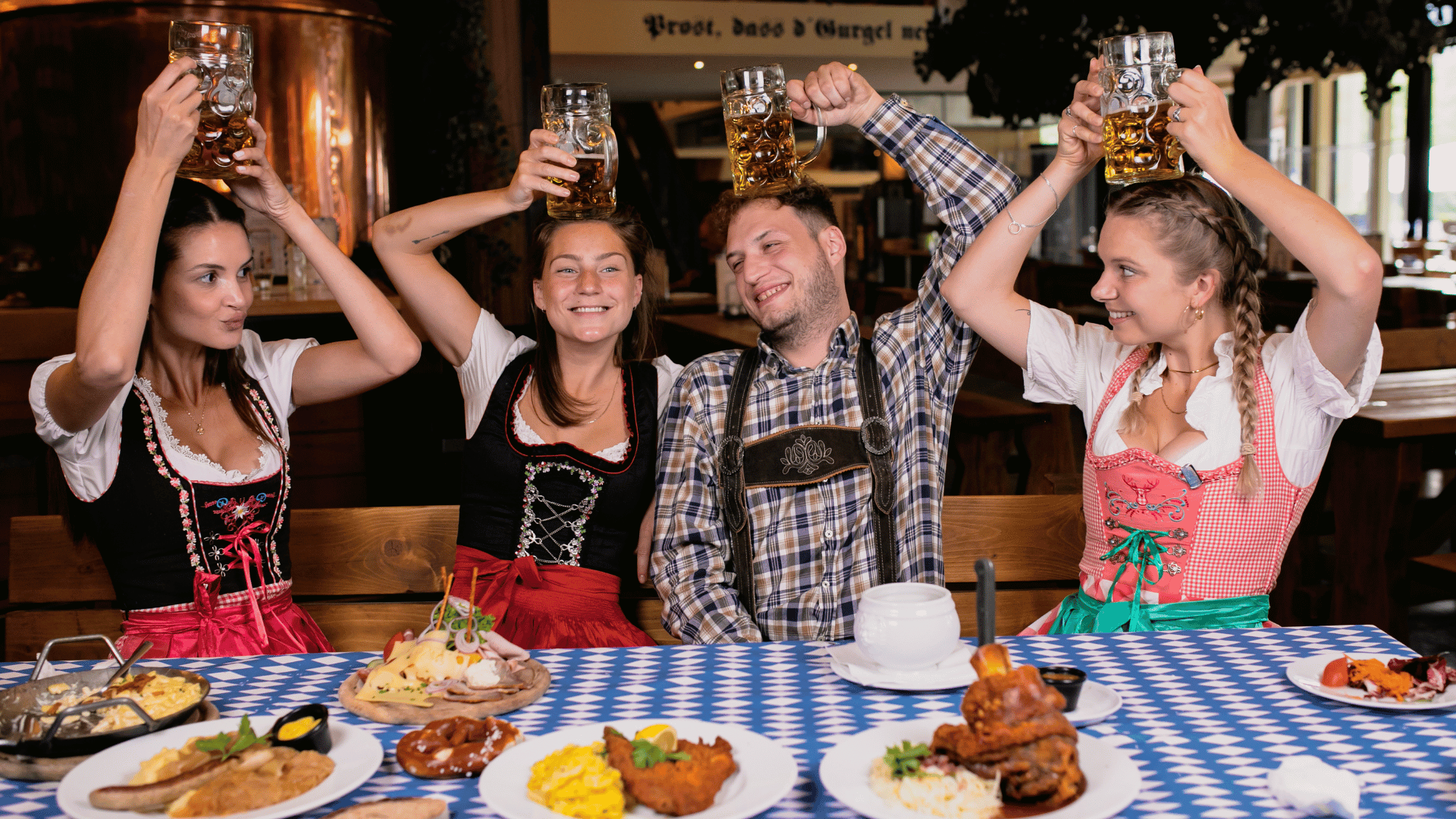German cuisine is filling, substantial, and varied. It’s comfort food made using premium, frequently locally sourced ingredients.
Germany’s cuisine has been influenced not just by its agricultural roots but also by the numerous immigrants who have called Germany home over the years.
There is undoubtedly more to it than only combining beer, sauerkraut, and sausage.
Germans today value well-prepared, well-served meals just as much as they value a fast bite while traveling. Culinary markets, beer gardens, wine festivals, food museums, and upscale dining establishments abound in this nation.
So, do they feel hungry? Are you currently hungry? See our list of the traditional German foods you must eat when visiting.

Königsberger Klopse
Grandmothers and chefs alike adore this delightful meal of meatballs in a creamy white sauce with capers, which was named after the old East Prussian capital of Königsberg (now Kaliningrad in Russia).
Traditionally, veal mince, onions, eggs, anchovies, pepper, and other spices are used to make the meatballs. This substantial comfort dish has a surprisingly exquisite finish thanks to the capers and lemon juice in the sauce.
Officials in the German Democratic Republic renamed the meal kochklopse (boiled meatballs) to prevent any association with its namesake, which the Soviet Union had conquered. Most German restaurants still serve königsberger klopse nowadays, but Berlin and Brandenburg are where you can find them most frequently.

Königsberger klopse
Wurst and Sauerkraut
Wurst and sauerkraut, two other varieties of delectable German food, are other options to try.
A combination of veggies is called sauerkraut, and it is made to taste like kraut.
The primary distinction between the two is that wurst is made with meat and a variety of vegetables, whereas sauerkraut is created with cabbage that has been boiled and salted to taste like what is used elsewhere in the world.

Wurst and Sauerkraut
German Pretzel
Excellent German pretzels exist. They simply taste that much better in Germany for some reason. They go well together while you’re enjoying the best German beers in a beer garden.
That may be the cause. These mouthwatering bread knots are available salted or with various toppings like cheese, sugar, or cinnamon.
German pretzels were designed to resemble hands clasped in prayer; this is where the recognizable knot originated.

German Pretzel
German Maultaschen
Similar to ravioli but larger are the Swabian maultaschen. They often come in the shape of square, palm-sized pockets of dough filled with a variety of savory, sweet, meaty, and vegetarian contents.
Minced pork, bread crumbs, onions, and spinach are classic ingredients that are combined and seasoned with salt, pepper, and parsley. They are frequently cooked and served with broth rather than sauce for a tender, creamier delicacy, however they can also occasionally be pan-fried and buttered for added richness.
Maultaschen are still available nowadays all over Germany (even frozen in grocery stores), but they are particularly popular in the south.

Maultaschen
German Sausages
Without sausages, Germany would not exist.
The best German street food is bratwurst, or fried sausages, and there are innumerable cured, smoked, and other types to choose from throughout wurst-loving Germany.
German bratwurst come in more than 40 different kinds. Fried foods are excellent partners for German beer. They can be grilled or fried, then served in a white bread roll with mustard or with potato salad or sauerkraut.

German Sausage
